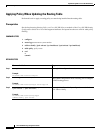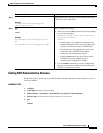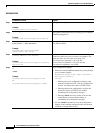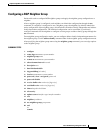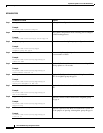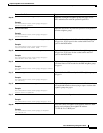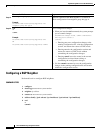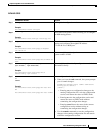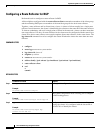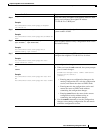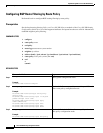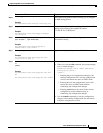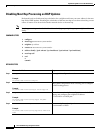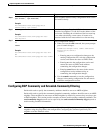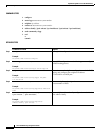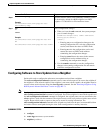
Implementing BGP on Cisco IOS XR Software
How to Implement BGP on Cisco IOS XR Software
RC-60
Cisco IOS XR Routing Configuration Guide
Configuring a Route Reflector for BGP
Perform this task to configure a route reflector for BGP.
All the neighbors configured with the route-reflector-client command are members of the client group,
and the remaining iBGP peers are members of the nonclient group for the local route reflector.
Together, a route reflector and its clients form a cluster. A cluster of clients usually has a single route
reflector. In such instances, the cluster is identified by the software as the router ID of the route reflector.
To increase redundancy and avoid a single point of failure in the network, a cluster can have more than
one route reflector. If it does, all route reflectors in the cluster must be configured with the same 4-byte
cluster ID so that a route reflector can recognize updates from route reflectors in the same cluster. The
bgp cluster-id command is used to configure the cluster ID when the cluster has more than one route
reflector.
SUMMARY STEPS
1. configure
2. router bgp autonomous-system-number
3. bgp cluster-id cluster-id
4. neighbor ip-address
5. remote-as autonomous-system-number
6. address-family {ipv4 unicast | ipv4 multicast | ipv6 unicast | ipv6 multicast}
7. route-reflector-client
8. end
or
commit
DETAILED STEPS
Command or Action Purpose
Step 1
configure
Example:
RP/0/RP0/CPU0:router# configure
Enters global configuration mode.
Step 2
router bgp
autonomous-system-number
Example:
RP/0/RP0/CPU0:router(config)# router bgp 120
Enters BGP configuration mode allowing you to configure
the BGP routing process.
Step 3
bgp cluster-id
cluster-id
Example:
RP/0/RP0/CPU0:router(config-bgp)# bgp
cluster-id 192.168.70.1
Configures the local router as one of the route reflectors
serving the cluster. It is configured with the cluster ID of
192.168.70.1 to identify the cluster.



